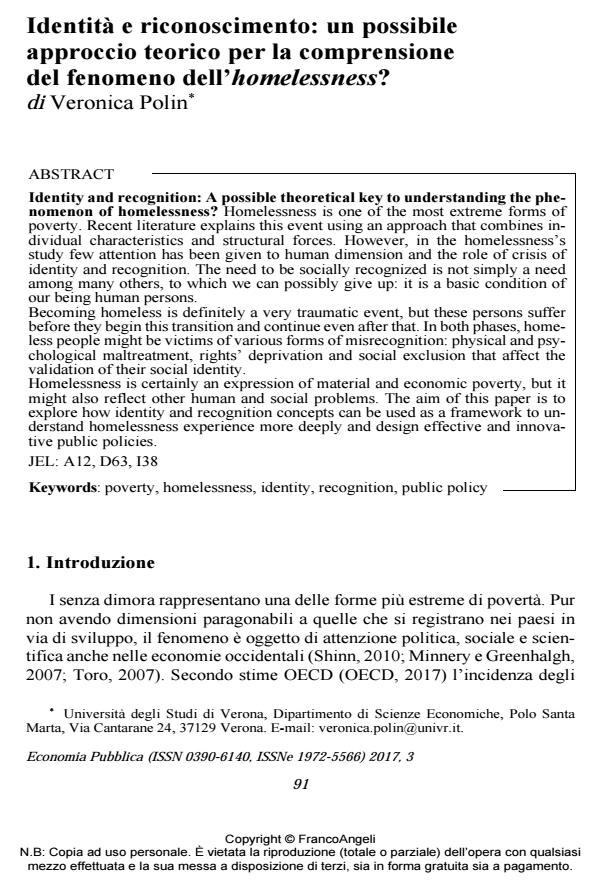Identità e riconoscimento: un possibile approccio teorico per la comprensione del fenomeno dell’homelessness?
Journal title ECONOMIA PUBBLICA
Author/s Veronica Polin
Publishing Year 2018 Issue 2017/3
Language Italian Pages 27 P. 91-117 File size 245 KB
DOI 10.3280/EP2017-003004
DOI is like a bar code for intellectual property: to have more infomation
click here
Below, you can see the article first page
If you want to buy this article in PDF format, you can do it, following the instructions to buy download credits

FrancoAngeli is member of Publishers International Linking Association, Inc (PILA), a not-for-profit association which run the CrossRef service enabling links to and from online scholarly content.
Identity and recognition: A possible theoretical key to understanding the phenomenon of homelessness? Homelessness is one of the most extreme forms of poverty. Recent literature explains this event using an approach that combines individual characteristics and structural forces. However, in the homelessness’s study few attention has been given to human dimension and the role of crisis of identity and recognition. The need to be socially recognized is not simply a need among many others, to which we can possibly give up: it is a basic condition of our being human persons. Becoming homeless is definitely a very traumatic event, but these persons suffer before they begin this transition and continue even after that. In both phases, homeless people might be victims of various forms of misrecognition: physical and psychological maltreatment, rights’ deprivation and social exclusion that affect the validation of their social identity. Homelessness is certainly an expression of material and economic poverty, but it might also reflect other human and social problems. The aim of this paper is to explore how identity and recognition concepts can be used as a framework to understand homelessness experience more deeply and design effective and innovative public policies.
Keywords: Poverty, homelessness, identity, recognition, public policy
Jel codes: A12, D63, I38
Veronica Polin, Identità e riconoscimento: un possibile approccio teorico per la comprensione del fenomeno dell’homelessness? in "ECONOMIA PUBBLICA " 3/2017, pp 91-117, DOI: 10.3280/EP2017-003004